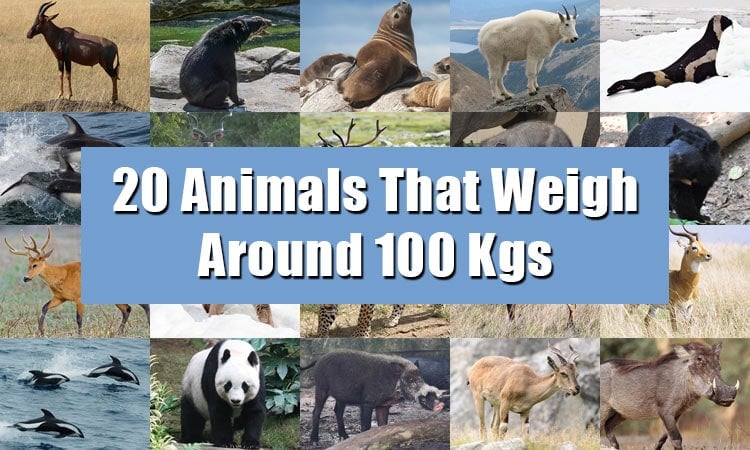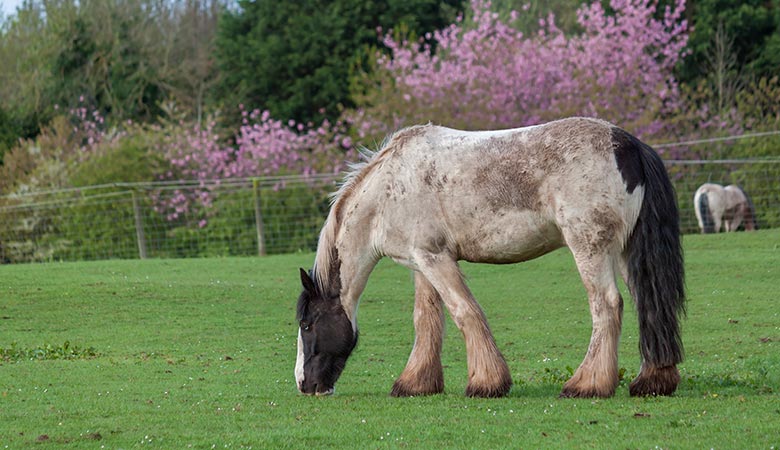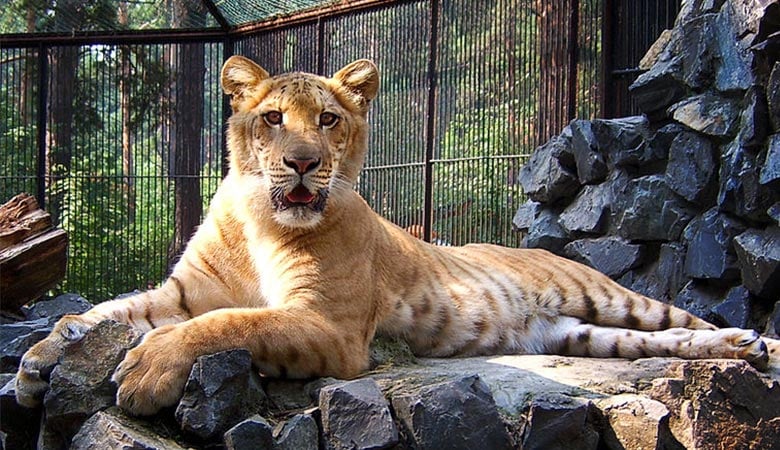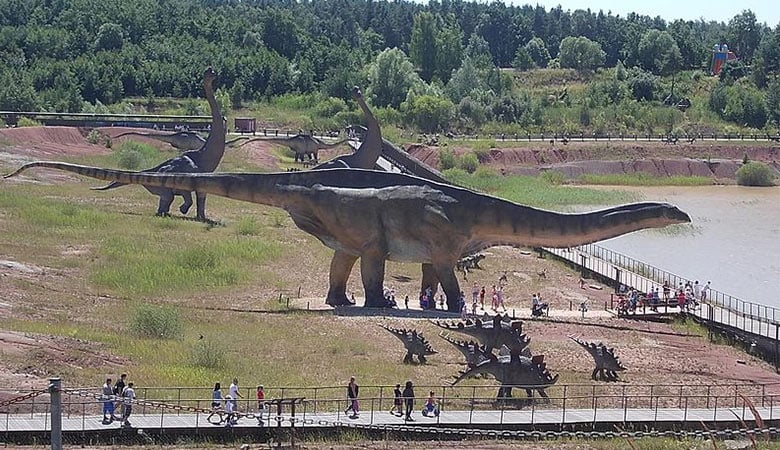Animals that weigh around 800 pounds are often not in areas where many people live. As a result, it might not be easy for you to think of many animals that are that large. This list of animals that weigh 800 pounds might bring up examples of animals you wouldn’t have thought of – or even some you didn’t know exist.
So, I compiled a list of animals that weigh around 800 pounds that Animals that weigh around 800 pounds includes:
- American bison
- Moose
- Giant eland
- Grizzly bears
- Moose
- Yaks
Each of these animals has a range of weights that include 800 in their adult animals. This list of large animals will tell you more about where these species live, what they eat, and more interesting facts about their behavior and appearance.
Why is it Hard to Find Animals Around 800 Pounds?
Animals all over the world come in a multitude of shapes and sizes. However, relatively large animals aren’t that common. That’s because the larger the animal is, the more resources that it needs to develop and grow when young, to live, and to survive throughout its life.
This list will tell you more about these animal species that defied the limits of nature and evolved to produce adult animals that weigh 800 pounds.
You might think that animals large enough to make it onto this list would tend to be predators. To get enough food to maintain their size, you might think animals might need to hunt other animals just to be able to eat as much as they need. However, most of the largest animals in the world are herbivores; keep reading to find out which enormous plant-eaters are on this list.
American Bison
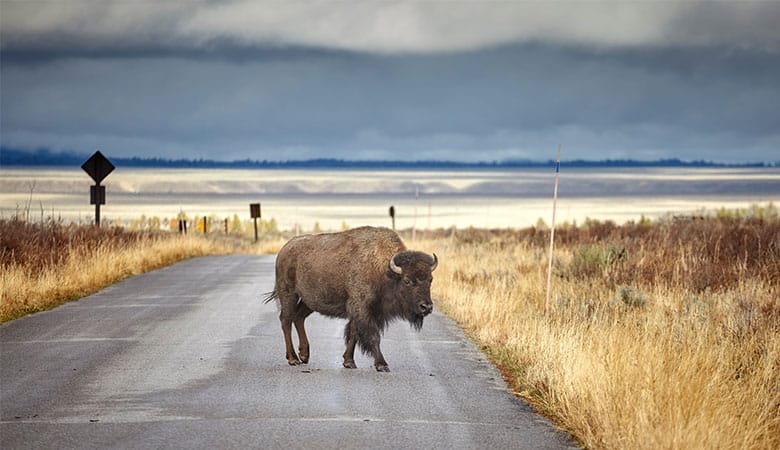
Adult bison can weigh anywhere from 880 pounds to 2,800 pounds. Compared to their European cousins, which can weigh between 1,800 to 2,200 pounds, American bison vary more in size and in the location where they live.
American bison live in the midlands of North America, west of the Mississippi River and east of the Sierra Nevada. These huge bovine animals look similar to other bovine mammals, like cows and buffalo, but bison are significantly larger, have much more hair, and have more curved horns.
- Location: American bison reside in the Great Plains of the U.S. and Canada.
- Habitat: American bison are known to stick to living in open or semi-open grasslands along river valleys, prairies and planes
- Average Adult Weight: 880 – to 2,800 pounds
- Fun Fact: Bison were once thought to only eat limited types of grasses found in plains, but actually, these healthy eaters switch the plants they eat according to which ones offer the most protein according to the seasons.
American bison are the largest mammals in North America. Their ability to digest and gain energy from plant matter called cellulose (that’s indigestible in humans) has made them able to benefit from the endless supply of grasses and other rapidly grown plants in the American Great Plains.
Giant Eland
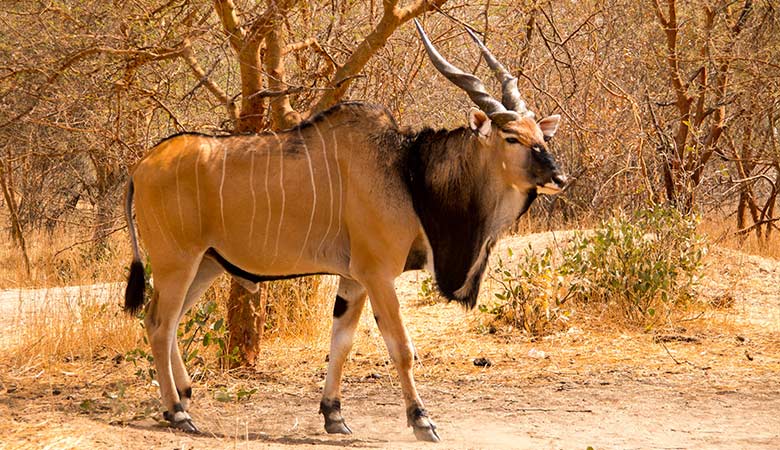
The Giant eland is a species of antelope that weighs between 660 pounds and 2200 pounds. Giant elands are a distinctive look compared to other antelopes because of their spiral-shaped horns. Much like their name would suggest, the Giant eland is the largest type of antelope in the world. They They can be almost ten feet in length.
- Location: Central and western Africa, including South Sudan, Chad, Cameroon, and Chad
- Habitat: Giant eland are particularly adaptable to different environmental conditions and can live in a wide range of habitats, primarily in savanna, woodlands, and glades, but they can also survive in deserts.
- Average Adult Weight: 660 to 2200 pounds
- Fun Fact: Although a smaller species of eland exists, the namen“giant” eland wasn’t chosen for the animal’s size; instead, it refers to their distinctive and large spiral horns.
The giant eland is another large herbivore and survives off of leaves, grasses, and branches. They travel in large herds over vast stretches of land and move to not deplete their food source in a single location.
Grizzly Bear
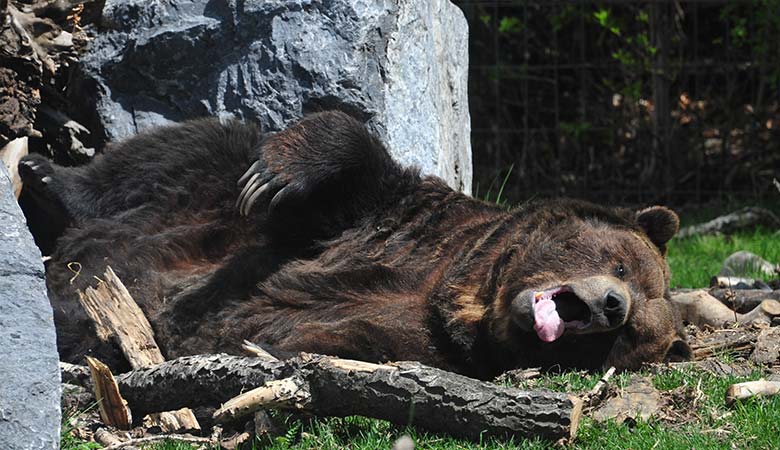
The grizzly bear, also known as the North American brown bear, grows to adults of up to 790 pounds. What’s interesting about this species is how significant the difference in sizes is between male and female grizzlies. While male grizzlies grow to between 400 pounds to 790 pounds, female grizzlies only grow to a fraction of the males’ size, between 290 pounds to 400 pounds.
These large mammals are omnivores; they eat a variety of plants and animals that includes a variety of deer species, birds, and fish, as well as fruits, nuts, and grasses, depending on the resources available in their specific location.
- Location: Alaska, Montana, and Wyoming, United States of America
- Habitat: Grizzly bears live in a range of habitats, including woodlands, forests, alpine meadows, and prairies, places that provide a variety of prey and plant life to support their dietary needs.
- Average Adult Weight: 290 to 790 pounds
- Fun Fact: Grizzlies that live in areas with cold seasons can hibernate from 5 to 7 months out of the year; the only exception was the California grizzly bear, as when they were still naturally present in the state, they didn’t experience a distinct cold season.
When standing, these large bears can be up to eight feet tall. Their massive size and large claws make them a fierce predator. However, despite those fearsome features, 75% of their diet is made up of berries nuts and seeds.
Moose
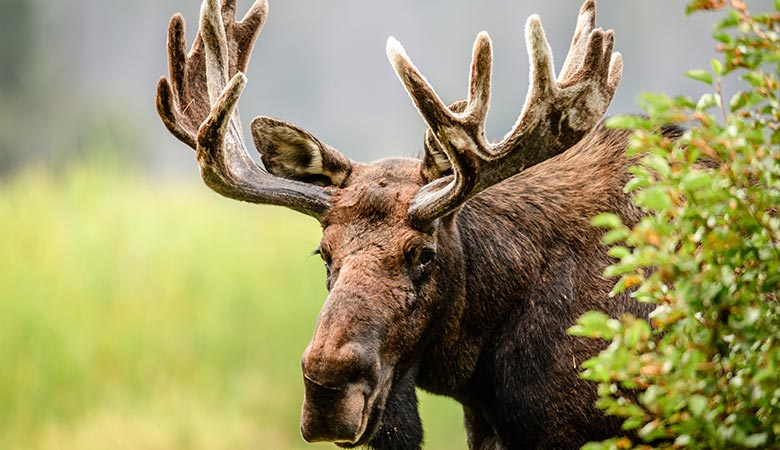
The moose is the largest species within the deer family in North America, and adult moose weigh between 840 pounds and 1540 pounds. These herbivores generally eat pond grasses, tree shoots, and shrubs. Although moose don’t have to hunt for food, male moose use their impressive antlers to display dominance and to fight rivals and siblings.
- Location: Alaska, United States of America
- Habitat: Moose live in boreal forests in areas with enough snow not to worry about predators and enough plant life to support their dietary needs.
- Average Adult Weight: 840 to 1540 pounds
- Fun Fact: The Alaskan moose, the largest subspecies, have eightsharp incisors but doesn’t have any front upper teeth.
Moose are well adapted to their cold living conditions. They have thickened skin and a coat of hair that insulates them from the low temperatures of the Alaskan and Yukon regions where they live. As a result, moose don’t thrive in warmer weather, where their cold-adapted features can cause them to overheat quickly.
Yak
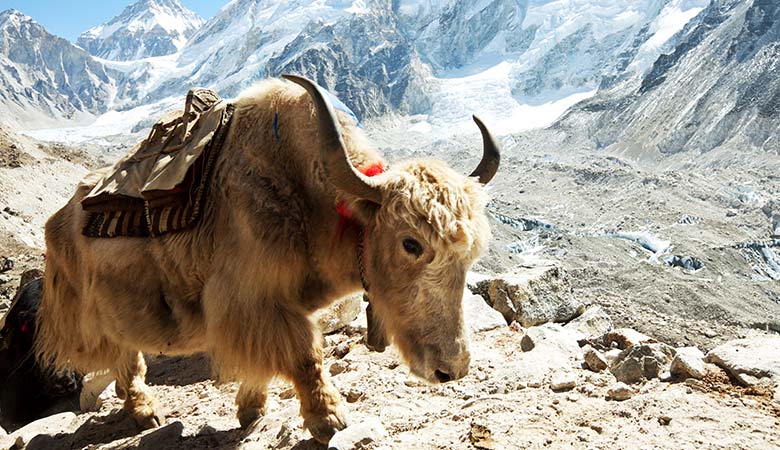
Another large bovine, the yak weight between 500 pounds and 1300 pounds, but has a much different appearance than bison. Yaks have very long, shaggy hair that covers the majority of their body. This animal is a domesticated species of previously wild oxen, and they are used to perform labor is much hairier and larger than the American Bison.
- Location: Indian, Tibet, Myanmar, Yunnan, Sichuan, Mongolia, and Siberia
- Habitat: Yaks live in treeless tundra in the mountains and plains of southern Asia and spend a significant among of time at high altitudes. Since the plant life in the tundra is limited, they live off of grasses, herbs, and mosses.
- Average Adult Weight: 500 to1300 pounds
- Fun Fact: Yaks are related to cows but diverged into a distinct species over time; the process of their adaptation to their high-altitude climates have resulted in yaks having larger hearts and lungs compared to cows.
Yaks’ large, hairy body and ability to withstand cold temperatures allow them to live at the highest altitude compared to any other mammal on earth. That ability makes them useful to local guides who use yaks to carry heavy loads when leading climbing expeditions in the Himalayan mountains.
In Conclusion
There are a wide variety of animals that weigh 800 pounds that have similar and distinct features to compare and contrast. It’s certainly impressive how so many of these enormous animals tend to be herbivores. It’s hard to imagine how much of their time these animals have to spend grazing on plants just to maintain their body mass.
Seeing what an 800-pound animal looks like around the world reminds you just how diverse the animal kingdom is.

